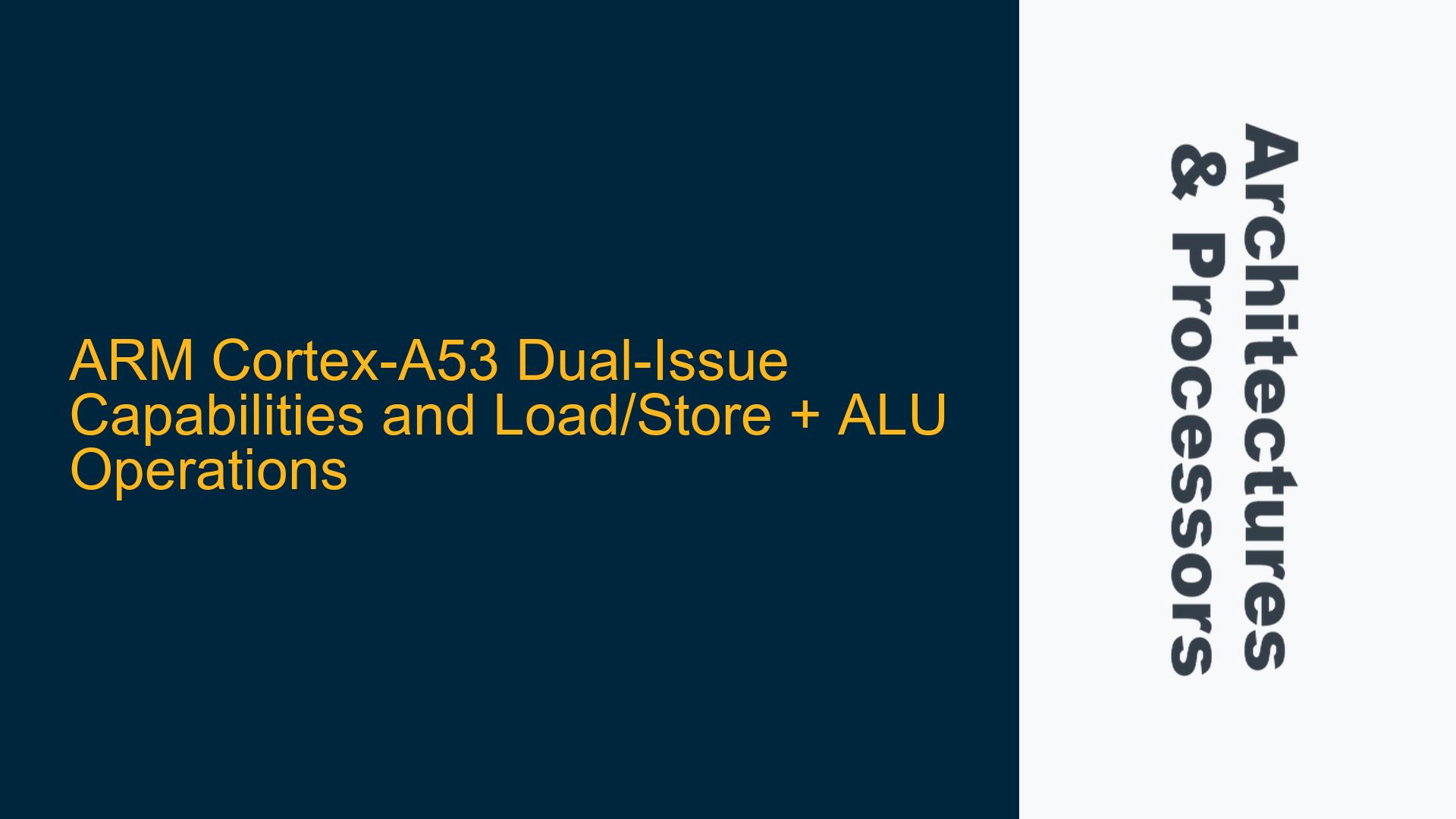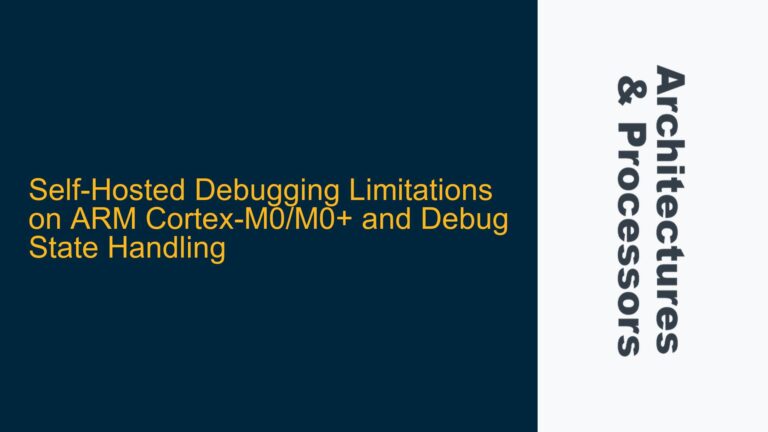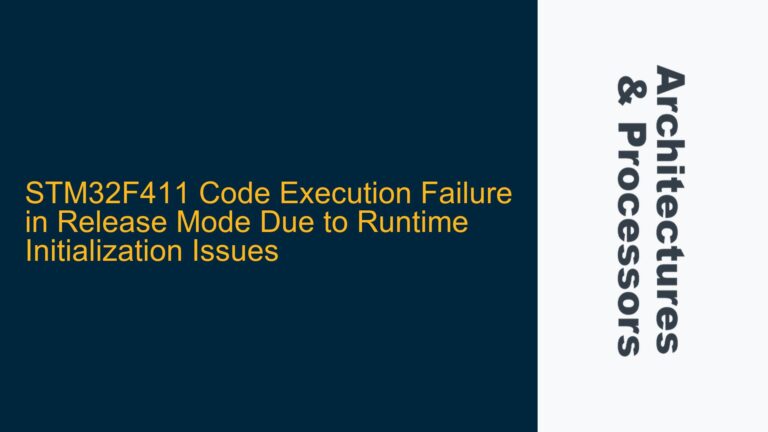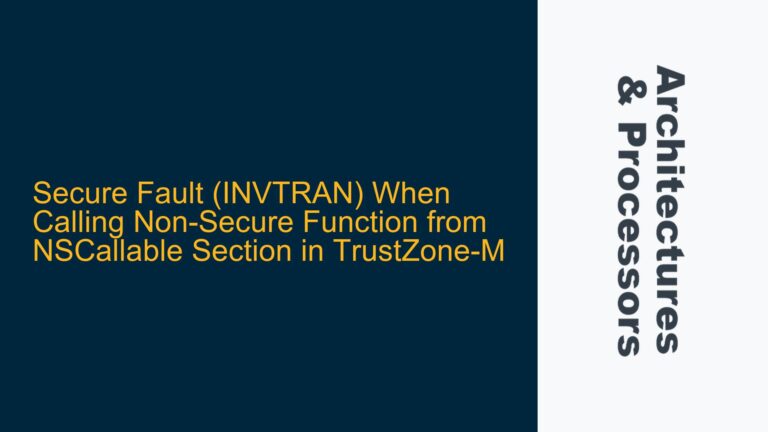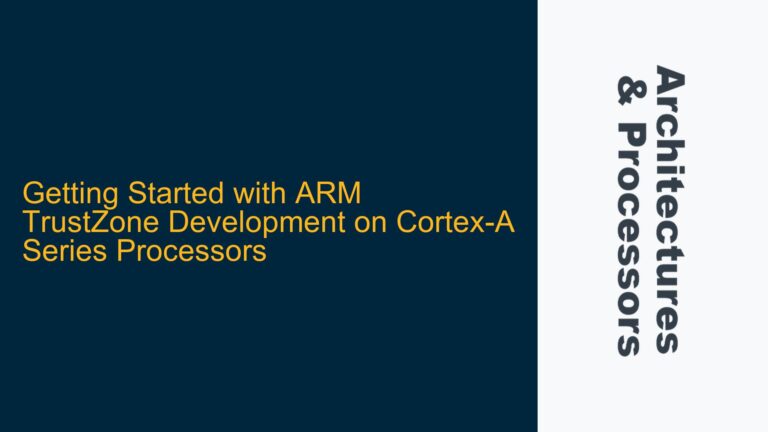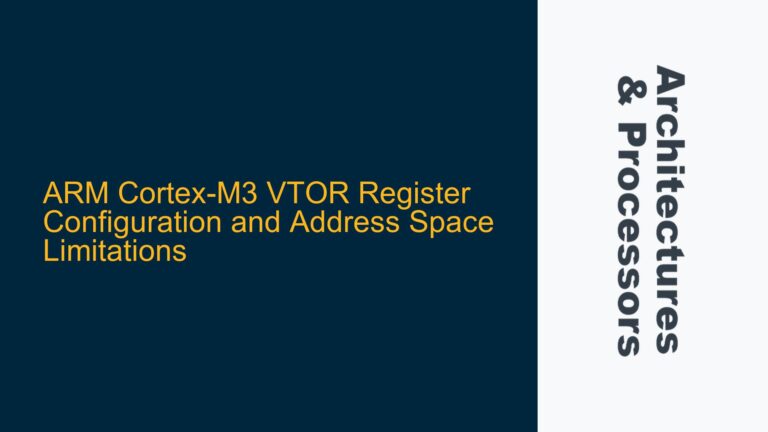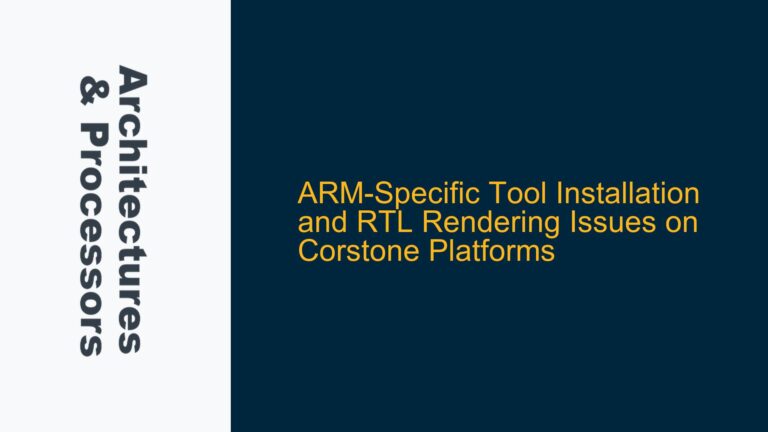ARM Cortex-A53 Dual-Issue Mechanism and Instruction Pairing
The ARM Cortex-A53 processor, part of the ARMv8-A architecture, is designed to deliver a balance of performance and power efficiency, making it a popular choice for embedded systems and mobile applications. One of its key features is the ability to dual-issue instructions, which allows the processor to execute two instructions in the same clock cycle under certain conditions. This capability is particularly relevant when considering the simultaneous execution of load/store operations and ALU (Arithmetic Logic Unit) operations.
The Cortex-A53 employs a dual-issue pipeline, which means it can decode and issue two instructions per cycle to its execution units. However, not all instructions can be paired together. The processor’s instruction pairing logic determines which combinations of instructions can be executed concurrently. For example, a load/store operation can be paired with an ALU operation, provided that the instructions do not have dependencies that would prevent parallel execution.
The dual-issue capability is not explicitly exposed through intrinsic commands in high-level programming languages like C or C++. Instead, it is managed by the processor’s hardware and the compiler’s instruction scheduling. Compilers such as GCC or ARM Compiler can optimize code to take advantage of dual-issue capabilities by reordering instructions to maximize parallelism. However, for fine-grained control, developers may need to resort to writing assembly code, where they can explicitly arrange instructions to exploit dual-issue opportunities.
Constraints and Dependencies in Dual-Issue Execution
While the Cortex-A53’s dual-issue capability can significantly improve performance, it is subject to several constraints and dependencies that must be carefully managed. One of the primary constraints is data dependency. If an ALU operation depends on the result of a load operation, the processor cannot execute them in parallel. Instead, it must wait for the load operation to complete before proceeding with the ALU operation. This dependency can create pipeline stalls, reducing the effectiveness of dual-issue execution.
Another constraint is resource contention. The Cortex-A53 has a limited number of execution units, and not all combinations of instructions can be executed simultaneously. For example, if two instructions require the same execution unit, they cannot be dual-issued. Additionally, memory access latency can impact the effectiveness of dual-issue execution. If a load operation results in a cache miss, the processor may have to wait for data to be fetched from main memory, delaying subsequent instructions.
The Cortex-A53 also has specific rules for instruction pairing. For instance, a load/store operation can only be paired with an ALU operation if they are independent and do not compete for the same resources. The processor’s instruction scheduler must carefully analyze the instruction stream to identify opportunities for dual-issue execution while respecting these constraints.
Optimizing Code for Dual-Issue Execution on Cortex-A53
To fully leverage the Cortex-A53’s dual-issue capabilities, developers must adopt a systematic approach to code optimization. This involves understanding the processor’s microarchitecture, instruction set, and the constraints discussed earlier. One effective strategy is to minimize data dependencies by rearranging instructions to allow for more parallel execution. For example, if a sequence of instructions includes multiple independent ALU operations, they can be interleaved with load/store operations to maximize dual-issue opportunities.
Another important consideration is the use of compiler optimizations. Modern compilers are equipped with sophisticated algorithms for instruction scheduling and register allocation, which can automatically optimize code for dual-issue execution. However, developers should be aware of the compiler’s limitations and, when necessary, use manual optimizations such as inline assembly or compiler intrinsics to achieve the desired performance.
In cases where manual optimization is required, developers should focus on reducing pipeline stalls and resource contention. This can be achieved by carefully analyzing the instruction stream and identifying bottlenecks. For example, if a particular sequence of instructions frequently results in pipeline stalls due to data dependencies, developers can restructure the code to reduce these dependencies. Similarly, if resource contention is a problem, developers can modify the code to distribute the workload more evenly across the available execution units.
Finally, developers should consider the impact of memory access patterns on dual-issue execution. Efficient use of the cache hierarchy can significantly reduce memory access latency, allowing the processor to maintain a high rate of dual-issue execution. Techniques such as loop unrolling, data prefetching, and cache-conscious data structures can help optimize memory access patterns and improve overall performance.
In conclusion, the ARM Cortex-A53’s dual-issue capability offers significant performance benefits, but realizing these benefits requires a deep understanding of the processor’s architecture and careful optimization of code. By addressing data dependencies, resource contention, and memory access patterns, developers can maximize the effectiveness of dual-issue execution and achieve optimal performance on the Cortex-A53.
